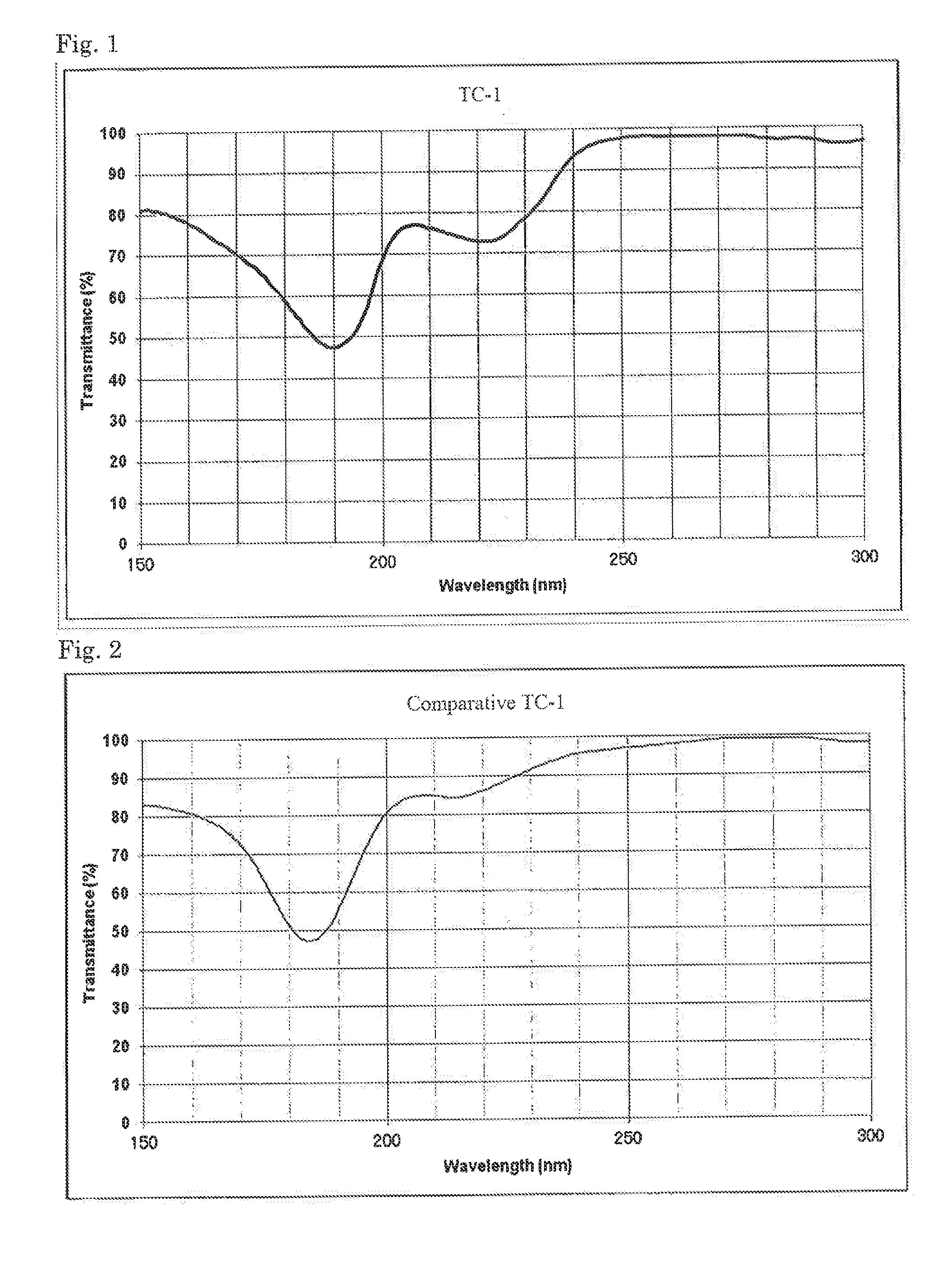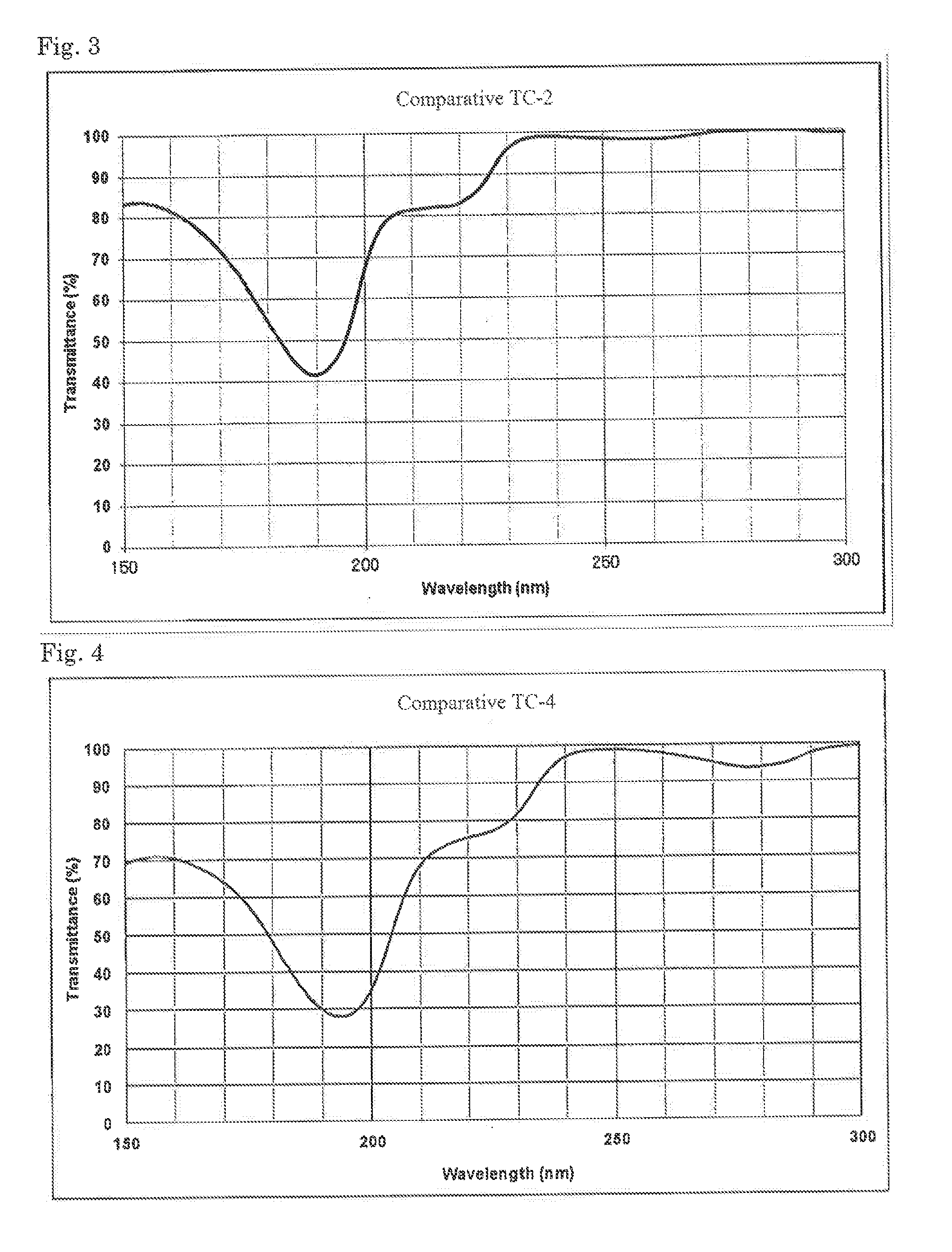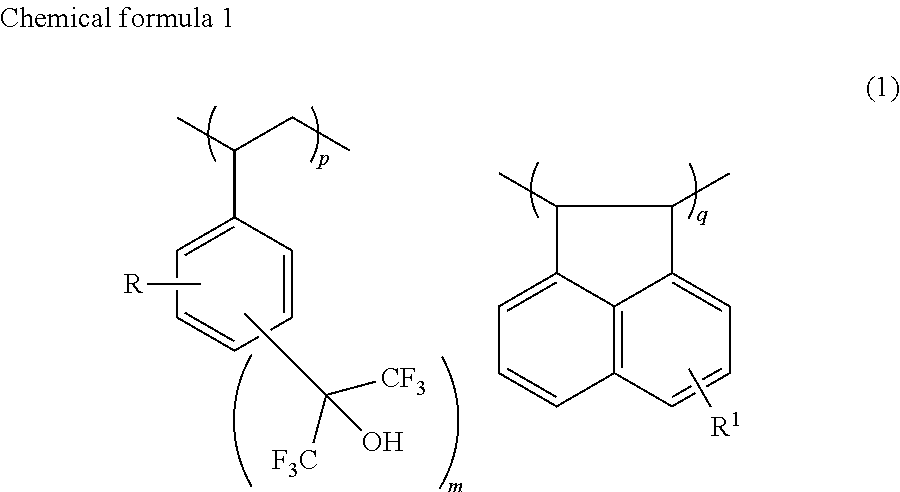Resist top coat composition and patterning process
a top coat and composition technology, applied in the field of resist top coat composition, can solve the problems of reducing the introduction of a hard pellicle, and the inability to use as a resist base resin, so as to reduce the film loss of the resist pattern, increase the etching resistance of the resist film, and reduce the emission of an outgoing gas
- Summary
- Abstract
- Description
- Claims
- Application Information
AI Technical Summary
Benefits of technology
Problems solved by technology
Method used
Image
Examples
Embodiment Construction
[0041]A resist top coat composition and patterning process according to exemplary embodiments of the present inventive concept will be described in more detail below.
[0042]By using the resist top coat composition according to exemplary embodiments of the present inventive concept, head enlargement of a resist pattern due to an amine contamination in air may be reduced, and resist film sensitivity may be increased due to a sensitization effect on a resist film. Generation of an outgoing gas from the resist film by exposure under vacuum may be reduced. The resist top coat composition according to exemplary embodiments of the present inventive concept may be soluble in an alkaline developer, and removal of a top coat may be performed simultaneously with development of the resist film. The top coat composition according to exemplary embodiments of the present inventive concept might not dissolve the resist film or form a mixing layer, and a change in the resist form after development mi...
PUM
| Property | Measurement | Unit |
|---|---|---|
| mass % | aaaaa | aaaaa |
| exposure wavelength | aaaaa | aaaaa |
| deposition rate | aaaaa | aaaaa |
Abstract
Description
Claims
Application Information
 Login to View More
Login to View More - R&D
- Intellectual Property
- Life Sciences
- Materials
- Tech Scout
- Unparalleled Data Quality
- Higher Quality Content
- 60% Fewer Hallucinations
Browse by: Latest US Patents, China's latest patents, Technical Efficacy Thesaurus, Application Domain, Technology Topic, Popular Technical Reports.
© 2025 PatSnap. All rights reserved.Legal|Privacy policy|Modern Slavery Act Transparency Statement|Sitemap|About US| Contact US: help@patsnap.com



